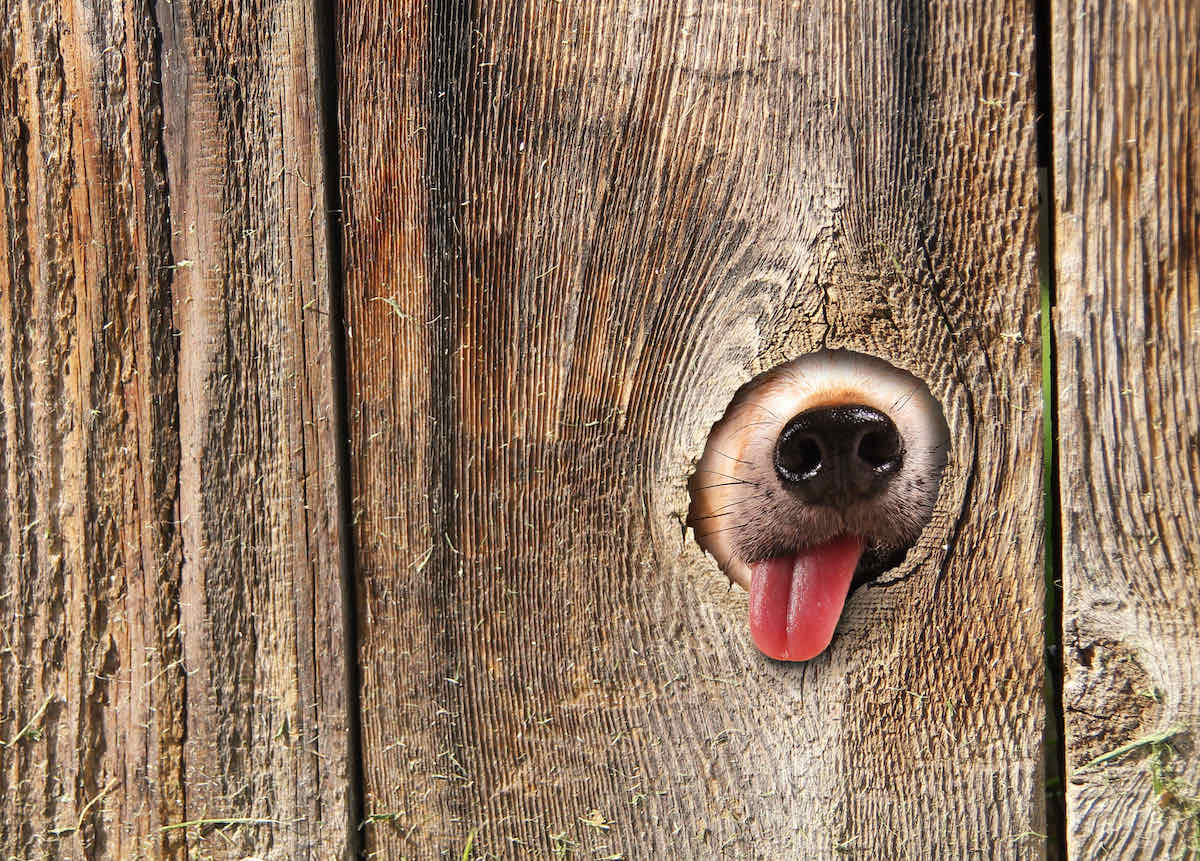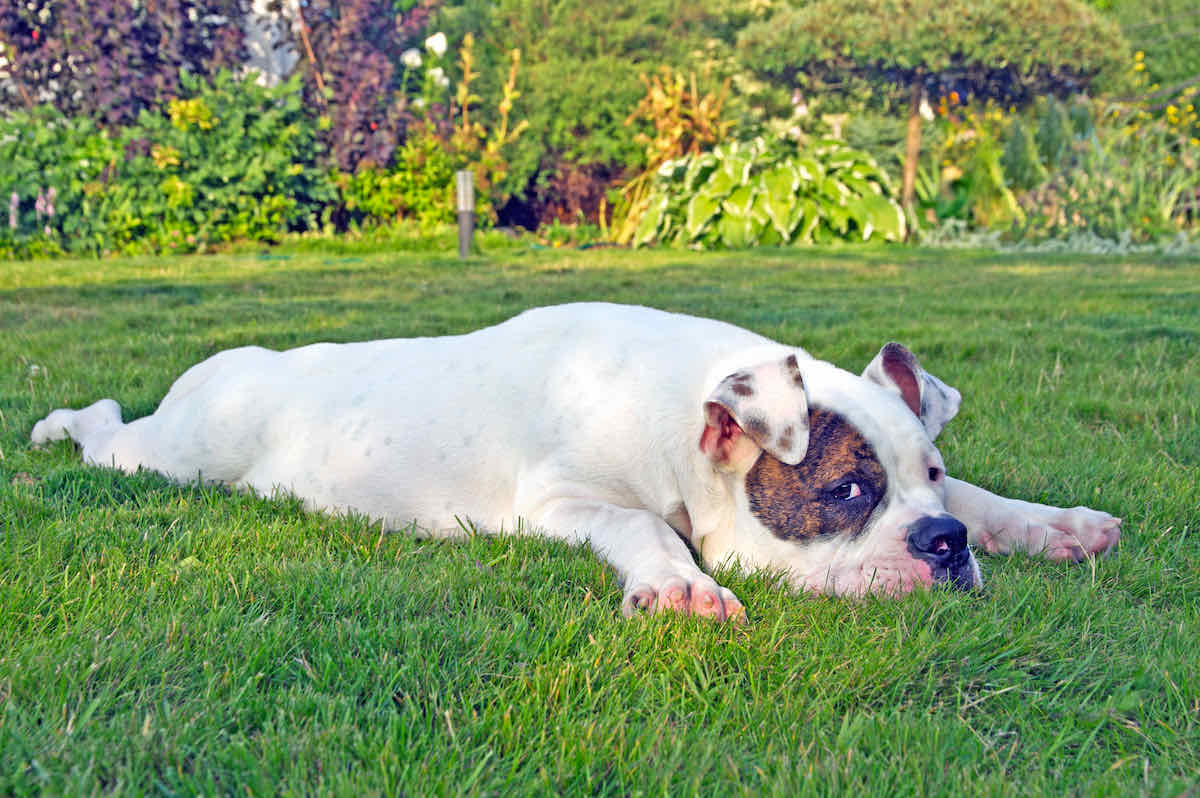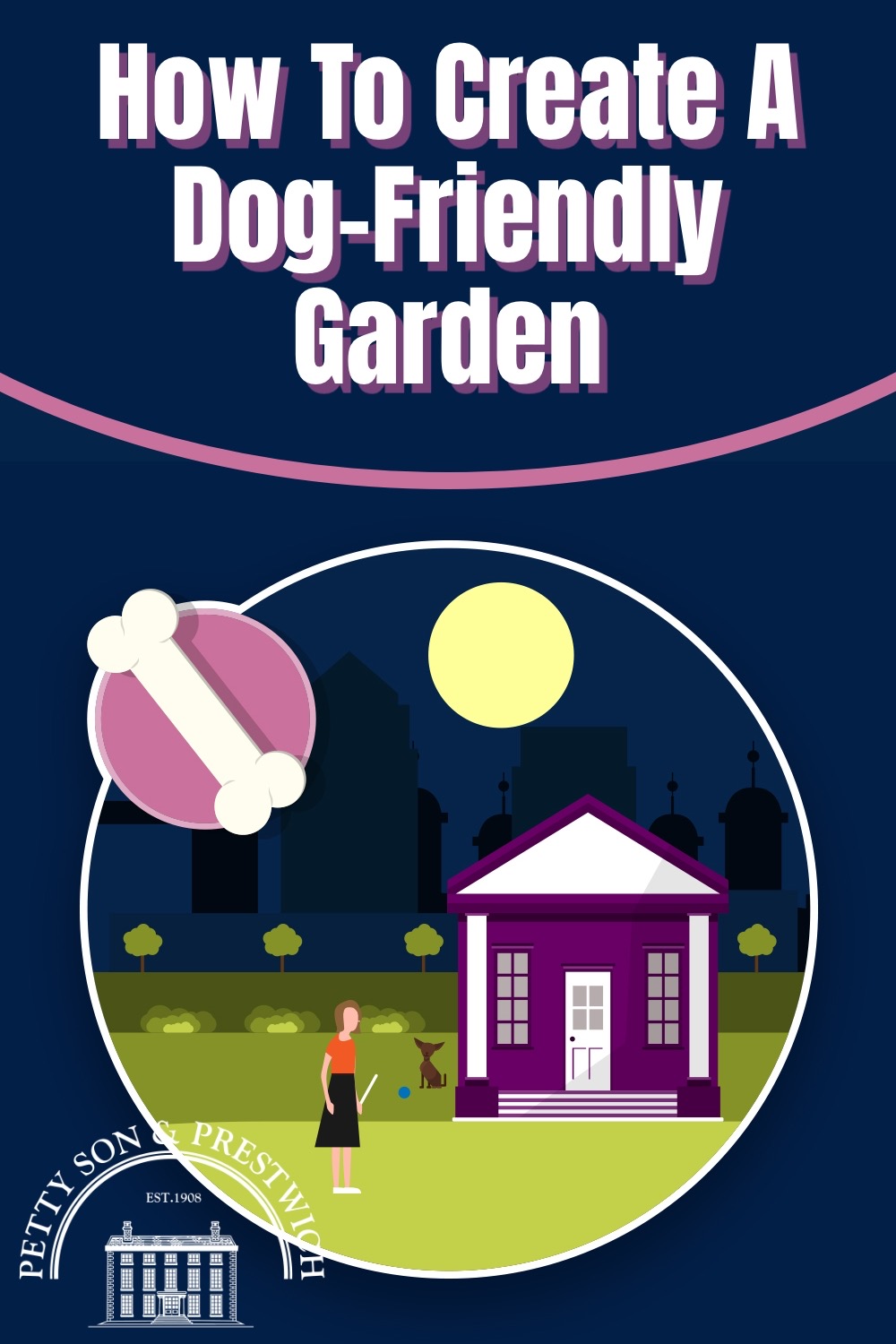The British are well known as a nation of dog lovers, and our appreciation of all things canine seems to grow with every passing year. A quarter of Brits now have a hound in their household.
However, for those of us who are as keen on our gardens as we are on our dogs, things can get a little bit tricky. Maintaining a garden with a mischievous mutt around is a challenge to say the least, and then there’s the dog’s safety to keep in mind, too.
Thankfully, due to the popularity of pooches, we are able to learn from the lessons of others and creating a dog-friendly garden is easier than ever before. All you need to do is follow a few key rules and you’ll be on your way to a tail wagging wonderland.
Let’s get started!
Make sure your plants are dog-friendly...
First things first, let’s dispel the myth that says dog-friendly gardens can’t be beautiful. While some plants are indeed toxic to dogs (more on that in the section below), there’s still plenty of fantastic flora to choose from.
From Camellias and Coral Bells through to Snapdragons and Sunflowers, there are dozens of colourful choices you can make when creating a garden suitable for dogs. All will bring something different to your outdoor space.
Another thing to bear in mind is sturdiness. Bringing in a robust and well-established shrub will stand more of a chance than a plant with delicate stems. You can even use hardier varieties as border protection for more flimsy flowers, but don’t be surprised if your furry friend still finds a way through!
...and avoid anything toxic
If there are dog-friendly plants, then it stands to reason there must be dog-unfriendly ones, too. Unfortunately, many of the most popular garden plants are toxic to dogs, so you’ll need to do your homework before planting anything new or introducing a pup to an already established garden.
This list from The Kennel Club highlights some of the most common house and garden plants to avoid if you own a dog.
Set up a dog toilet area
Keeping your garden clean and dog-friendly starts with a designated toilet spot. This not only protects your landscaping but also makes waste management easier.
Pick a spot that’s out of the way but easy for your dog to reach. Avoid high-traffic areas and opt for some natural shade if possible. Most importantly, choose a place you’re happy to clean regularly. Gravel or pea shingle works well for drainage, while artificial grass offers a neater look—just remember to clean it often. A small barrier or edging can help define the area and support training.
Regular scooping and rinsing with water or a pet-safe cleaner will keep odours under control. Short on time? A professional pooper scooper service, like Scooper Heroes, can handle the dirty work for you.
Secure the boundaries

Some dogs, especially terriers, just love to dig. Others will take an alternative route, opting to go over rather than under. Then there are those who think they’re Houdini hounds, stopping at nothing in their attempts to escape...whether that means going up, down, or around!
Regardless of the category your pooch falls in to, securing your garden’s boundaries is absolutely essential if you want to allow your dog to roam your backyard freely. Make sure your fences are high enough to thwart the leapers. Diggers can be discouraged by adding a purpose-built sandbox to distract them or by burying chicken wire beneath your fencing.
While the above methods will work, one thing you should always do when your dog is out in the garden is keep an eye on them. Nothing is a substitute for close supervision.
Raise your beds
If your dog is a digger, you’ll appreciate just how difficult it can be to grow anything that isn’t already established. For gracefully flimsy flora and foodstuffs such as fruit and veg, create a few raised beds to offer an extra layer of protection from the marauding mutt.
Making sure the beds are high enough to prevent jumping is the obvious goal, but many dogs have quite a leap if they put their mind to it. If this is the case with your dog, then adding some wire mesh around the border will help keep those paws at bay.
Choose organic
As you can probably imagine, chemicals and canines do not mix. Think carefully about your use of fertilisers and pesticides, always opting for more organic ways to get the job done wherever you can.
Similarly, if you have a water feature or pond, be mindful of the way you treat the water contained within them. Dogs will instinctively head towards these areas when thirsty and take a drink, so be sure not to add anything that could potentially harm your hound.
Select your mulch wisely
If you use mulch in your garden, make sure you’re not picking up one made from cocoa bean shells. As I’m sure you already know, chocolate can cause complications in canines, and cocoa bean shell mulch is no different. Similarly, spent hops can be problematic, too.
Use a good biodegradable mulch such as conifer bark or leaf mould instead. These will serve the same purpose and keep your dog safe and well, too.
Do away with gravel
Gravel can cause problems for a couple of reasons, so it should be avoided in dog-friendly gardens wherever possible. The tiny stones can stimulate a dog’s digging desire to the point of frenzy, which can lead to your hound constantly trying to reach whatever lies beneath the seductive shingle.
It’s also not unusual for them to swallow a few pieces as well, and that’s obviously never going to end well. While this is largely restricted to puppies, some adult dogs may have a penchant for pebbles, too, so it’s best to keep them away from temptation if you can.
Add shade and shelter

Dogs will naturally seek out shade and shelter when they feel the need to, so ensuring that your dog-friendly garden has plenty of options will help keep your hound happy. This doesn’t have to be an extravagant affair and can even serve a dual purpose, such as an area that offers both wind and sun protection, depending on the weather.
If the mercury goes too far either way, however, the best course of action will always be to bring your dog inside.
Create a play area
If there’s one thing that dogs love to do, it’s play, so creating an area for them to have fun makes a lot of sense. Haven’t a designated play spot will go some way to containing boisterous behaviour and can result in less damage being caused elsewhere by your overly-exuberant pal.
Again, this doesn’t need much in the way of physical objects to get it right, although a few toys or a dog tunnel will certainly help. It’s more about association than anything else. Make this part of the garden the only spot where you’ll engage in play with your dog and they’ll soon catch on.
You could also place their food and water bowls there, too, as an added incentive.
Put locks on sheds and garages
Securing areas such as sheds and garages is an important part of any dog-friendly garden. These are trouble hotspots for an inquisitive pooch, with numerous harmful objects lurking behind the bolted door. Don’t give your dog a chance to get inside and make mischief.
Buy an outdoor doggy shower
Last, but by no means least, is an optional outdoor doggy shower. There are some really good ones on the market these days and they’re great for cleaning off those muddy paws before your pooch comes back in the house. They’re also ideal for washing down your waggy-tailed pal after a long walk, too.
That’s it! Everything you need to know about creating the perfect dog-friendly garden without negatively impacting your property’s price.
If you’re thinking of buying or selling in Wanstead or any of E11’s fabulous surrounding areas, get in touch with our dog-mad team today. We’ve been operating locally for well over 100 years, so we know a thing or two about making property dreams happen in East London and West Essex. Give us a call!


As Petty’s MD, John steers the ship. He is, however, first to admit that the team around him run the show, and he’s incredibly proud of each and every one of them. Sporty and studious, caring and loyal, John is a father of two wonderful children (and Cooper the dog).
020 3370 8784 / Email Directly